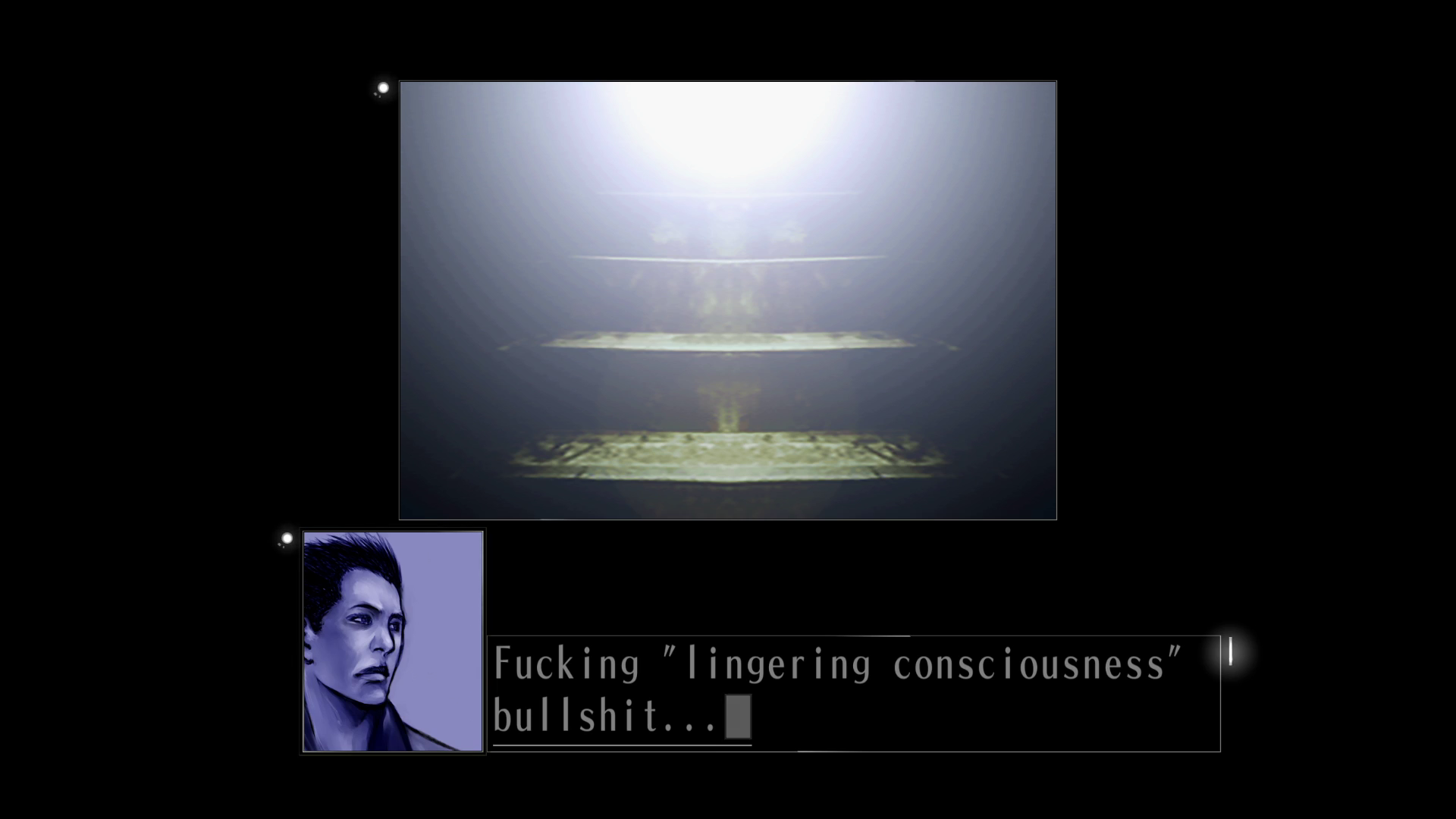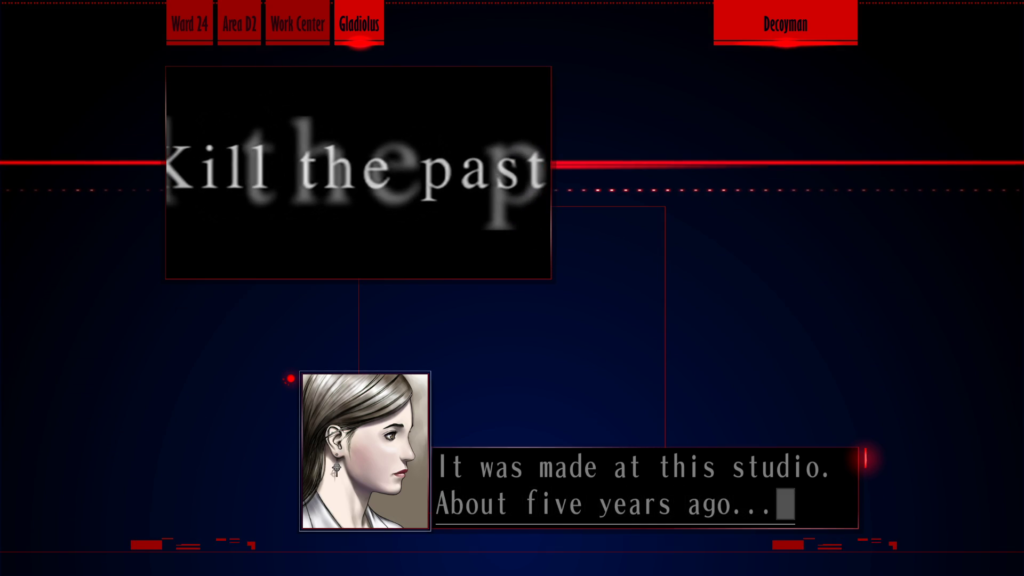Declaration is coming…

Elaborating that the pursuit of this light may spawn shadows, referring to Nezu and other horrors the characters have encountered, Kusabi calls this “a light that can be grasped by anyone” and urges Akira to “keep moving forward.” Similarly, “HIKARI” ends with Tokio ascending into the light of the new millennium: “Everything is in front of you… Everything is for you… Keep moving forward… Together with the light…” Note that he repeats Kusabi’s phrase “Keep moving forward.” When the voices of Nanami, Enzawa, and Shimohira, echoing Uminosuke, tell Tokio he cannot escape, he smiles and says, “Fuck off.” He rejects their promises of failure before ascending up the final stair into the glowing year 2000.
In The Silver Case, the new millennium is the new world of light and possibility that Kamui’s revolution promises to create by the violent destruction of the police state. The main characters, Akira, Tokio, Sumio, and Kusabi, all side with the savior Kamui, and Akira and Tokio are Kamui. Chizuru is a tragic figure who, unable to resist the various men pushing her around, becomes an unliberated Ayame. Then a savior Kamui/Ayame, Sakura, kills her and rescues Akira. Kusabi switches from vowing to exterminate all criminals in “Lunatics” to siding with Kamui in “LifeCut” to eliminate his real enemy, the class structure that manufactures crime. Akira begins hunting for Kamui with Republic in “Decoyman” and ends up being Uehara himself. Sumio is secretly aligned with Kamui’s values from the beginning, plotting to kill the past with Hiseki and Fuyuki. Tokio switches from saying “Fuck Kamui’s believers” in “YUME” to deeming Kamui the “words of the people” and embodying the savior Kamui by killing his wicked grandfather Uminosuke.
The Silver Case lacks any specific central villains until Nezu (the name suggests a rat, “nezumi”) and Hachisuka Uminosuke are introduced in the final few hours. The only “pure evil” figures in the story, the two receive minimal characterization because they are not psychological characters but symbols. Nezu is a technocrat manipulatng information to decide people’s fates on the basis of imperfect data and his own whims, and Uminosuke is an autocratic politician maintaining a false democracy.
UMINOSUKE: “The optimization of the perfect city continues by Nezu’s hand.”
TOKIO: “So he’s just one guy? That’s called a fucking dictator.”
Uminosuke’s only direct actions in The Silver Case are attempting to awaken his grandson Tokio as Format Kamui and, Satan-like, tempting him to murder Akira to effect this transformation into his machine in “HIKARI.” Nezu appears only at the close of “LifeCut.” Though framed as a gamer “playing” the 24 Wards in some way, Nezu still exists within the same reality as the other characters. In assassinating these two monsters, Tokio-Kamui and Akira-Kamui, respectively, refuse these forms of control as obstacles to the new millennium.

The “kill the past” art video Shimohira shows in Gladiolus is not merely a random collection of images but the opening video of The Silver Case. If Kamui is an artist, the player of The Silver Case is experiencing his art, what Kamui wants to say. Kamui has an occulted voice after all: the whole story, properly interpreted, is Kamui’s message.